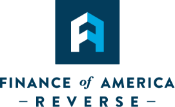Retirees in the United States are taking on more debt in their later years, leading to higher loan denial rates, according to a new study by the Washington, D.C. think tank Urban Institute. The report, “Denial Rates and Household Finances of Older Americans,” which was funded by Finance of America Reverse LLC (FAR) and based on data from 2018-2020, found rising debt-to-income (DTI) ratios among older homeowners, making their credit options limited. And with rising interest rates, this problem will become more dire for many retirees.
Urban Institute Main Points
Among the study’s key findings:
- Older homeowners with lower incomes but substantial home equity would benefit from equity extraction loans that are less dependent on incomes and debt, and more on assets, net worth and home equity.
- Most Americans struggle during their working years to adequately save for retirement.
- Homeowners have amassed more than $9 trillion in mostly untapped home equity.
- From 2018-2020 home equity lines of credit and cash-out refinances had the highest denial rates, driven mainly by borrowers’ debt-to-income ratio and insufficient credit history.
- HECMs had lower denial rates compared to other equity loan solutions.
- HECM loan volume has declined despite the lower denial rates, most likely due to historically low interest rates.
- Older homeowners are carrying substantially more debt than they have over the past 20 years.
We at FAR applaud the work of the Urban Institute, but we know that the situation is likely to get worse. Retirement can be unpredictable and the pandemic has made the situation for many retirees even more volatile. The data used in the study concluded in 2020, before COVID-19 and the economic ramifications that followed.
As interest rates and inflation rise in the coming years, debt-laden seniors with burdensome payment demands will find themselves in an even more precarious situation.
Rising Interest Rates
Homeowners have benefitted from low interest rates, and many, including seniors, have taken advantage of those rates. But interest rates will rise and have already begun to do so. Historically, this is not advantageous to retirees, who will find it harder to qualify for lending products because their income is already constrained.
According to the study: “The extent of the problem has been somewhat masked in recent years by ultra-low interest rates, which have temporarily pushed applicant DTIs and denial rates lower for cash-out refinances, the predominant equity extraction vehicle in the last three years. But once interest rates rise, so will DTI ratios and denial rates. This dynamic will not serve older homeowners well. In the long run, older homeowners, with limited incomes and substantial home equity, would benefit from having access to financial products such as reverse mortgages, whose underwriting is less dependent on applicant incomes and debt, and more on the value of assets, homeowner equity, and net worth.”
The study focuses heavily on home equity lines of credit (HELOCs) and the disproportionate denial rates among seniors later in retirement. While this is undoubtedly true, we at FAR feel HELOCs are rarely a good idea for retirees. This particular debt instrument in retirement adds risk and exposure that many financial advisors would advise against.
Adding to the problem, the National Council on Aging (NCOA) found that credit card and HELOC debt makes up a large portion of the total debt that seniors are carrying. The real-world consequences of this are devastating. The NCOA found the seniors miss rent and mortgage payments, cut back on their medications, and even skip meals to manage payments.
At FAR, we believe there is a better way. Seniors should not have to choose between meals or medicine. That’s why we advocate for exploring home equity extraction options that are empowering, not disabling. While a reverse mortgage is, of course, debt, its deferred debt. The reverse mortgage borrower receives a value exchange that makes its sustainable, and largely avoids the serious downsides of debt that significantly impacts their monthly cash flow.
Stress on Government Programs and Other Consequences
Seniors relying on HELOCs for retirement funds should also be cause for concern among Washington policymakers. If seniors and those nearing retirement age are accumulating debt with loans like HELOCs, there is a greater risk of defaults, and more Baby Boomers could be pushed into Medicaid and other programs.
From the perspective of retirees, there is also the issue of taxes. If people are adding debt and increasing their payment sizes, they are likely to draw more than the required minimum distribution from their retirement accounts, possibly paying more taxes.
Also, many seniors misunderstand Medicare and are working under the misguided assumption that the program will cover long-term care, nursing home care, and assisted living. It does not. That leaves the nest eggs of many retirees in a risky position at a time when they should seek to reduce risk.
The American Association of Retired Persons (AARP) uncovered some startling statistics. Fifty-nine percent of Americans believe Medicare will pay for an extended nursing home stay, while 52% think the program will cover assisting living costs. This misconception could have a dramatic impact on the financial well-being of seniors. To fund long-term care, many retirees will need other options.
Alternative Products May be the Answer
Our mission at FAR is to help people get to work on retirement and to provide homeowners with options. For some, a reverse mortgage may be the right choice, as outlined in the study. For others, alternative products may be the better option, like FAR’s EquityAvail, which reduces monthly mortgage payments for 10 years and then eliminates them all together*.
Like a HECM, the qualifications for some new equity extraction products are based more on asset-to-income and less on debt-to-income ratios than conventional mortgages and other traditional loans. And this could be helpful to seniors generating less income.
This appears to be the pattern observed during the last housing crisis. In a paper, “Seniors’ Home Equity Extraction: Credit Constraints and Borrowing Channels,” researchers found that in a credit-constrained environment, reverse mortgages continued to be accessible options for seniors through the recovery period, while other equity extraction lending options did not. According to the study: “During the house price boom (2001-2007), we find that credit constrained areas display higher rates of home equity borrowing than less constrained areas as home equity levels increase for cash-out refinancing and reverse mortgages. During the recovery period (2010-2015), we observe this relationship only for reverse mortgage borrowing, consistent with tightened underwriting for forward mortgage loans.”
Before interest rates rise further, we at FAR strongly advise those in or nearing retirement to consider an equity extraction options designed for retirees. As illustrated in the Urban Institute study, older homeowners will have limited options when interest rates rise, and they could find themselves saddled with large debt payments at a time when they can least afford it. Or worse, they could face a financial emergency and be denied other loan options.
Special thanks to Kristen Sieffert, Scott Norman, Steve Resch, and Phil Walker, from Finance of America Reverse LLC, and to Silvernest’s Amy Ford for their contributions to this response. This response does not reflect the views of the Urban Institute. This article is for financial professional use only and is not intended to provide financial planning, wealth management or tax advice. For tax advice, please consult a tax professional.
*Important information about this loan product: The borrower is required to make non-amortizing payments for the first 10years (120 months) of the loan term. These payments will not cover the full amount of interest accruing and interest will be added to the principal balance of the loan. When the payment period ends, interest and fees continue to be added to the loan balance over time. The loan balance after negative amortization depends on the loan term, which varies by borrower. The loan balance continues to grow over time as interest is added to the loan. This loan will reduce the borrower’s equity in the home which may make it more difficult to refinance the loan or to obtain cash upon the sale of the home. By refinancing an existing loan, the borrower’s total finance charges may be higher over the life of the loan. Primary occupancy only. Not available in all states. Additional terms and conditions apply. Ask a licensed loan officer for more details.
This article is intended for general informational and educational purposes only, and should not be construed as financial or tax advice. For more information about whether a reverse mortgage may be right for you, you should consult an independent financial advisor. For tax advice, please consult a tax professional.














I WANT TO KEEP UP TO DATE ON RETIREMENT TRENDS
Follow Us.